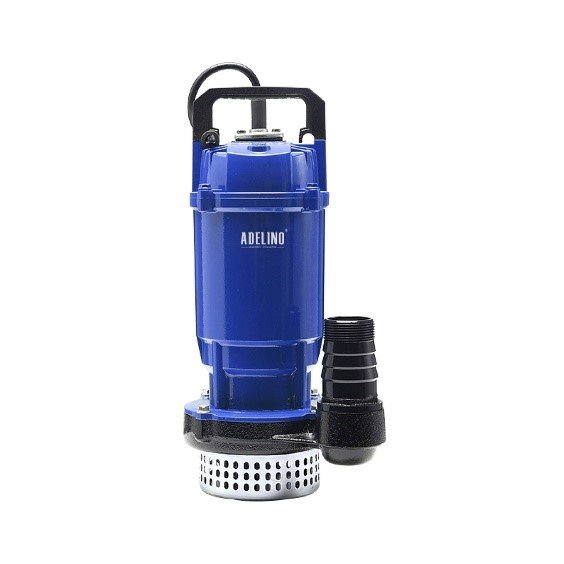How To Increase Alkalinity In Wastewater

Introduction
Water is a fundamental resource for life, and as such, its quality has massive implications for ecosystems and human health. Wastewater, which is generated from industrial, agricultural, and domestic activities, contains various contaminants including organic and inorganic substances, microorganisms, and heavy metals. One of the critical parameters in wastewater management is alkalinity—the capacity of water to neutralize acids. Alkalinity is crucial for maintaining stable pH levels, which in turn affects biological treatment processes, corrosion control, and overall water quality. In this article, we will explore in-depth methods and strategies to increase alkalinity in wastewater.
Understanding Alkalinity
Before delving into ways to increase alkalinity in wastewater, it’s essential to understand what alkalinity is and its relevance. Alkalinity is primarily a measure of the water’s ability to neutralize acids, composed mainly of bicarbonates, carbonates, and hydroxides. It is expressed in milligrams per liter (mg/L) of calcium carbonate (CaCO3). Alkalinity acts as a buffer, preventing drastic changes in pH that could be harmful to aquatic life and industrial processes.
Importance of Alkalinity
Environmental Impact
-
- Aquatic Life: Stable alkalinity levels ensure that aquatic ecosystems remain balanced. Extreme fluctuations in pH can be fatal to fish and other aquatic organisms.
-
- Nutrient Cycling: High alkalinity enhances the efficient cycling of nutrients like nitrogen and phosphorus, which are essential for plant growth.
Industrial Processes
-
- Corrosion Control: Low alkalinity levels can lead to corrosion of pipes and equipment in water treatment plants and distribution systems.
-
- Biological Treatment: In wastewater treatment plants, microbial populations that degrade organic pollutants thrive within a specific pH range, maintained by adequate alkalinity.
Factors Affecting Alkalinity in Wastewater
Understanding the factors that influence alkalinity in wastewater will help identify the best approaches to increase it.
-
- Natural Water Sources: The alkalinity of wastewater is initially influenced by the alkalinity of the source water.
-
- Industrial Discharges: Effluents from industries such as tanning, brewing, and textile production can affect the alkalinity of wastewater.
-
- Chemical Additives: Certain chemicals, either acidic or basic, used in industrial processes or household activities can alter wastewater alkalinity.
-
- Biochemical Reactions: Biological processes, such as nitrification and denitrification, consume alkalinity.
Methods to Increase Alkalinity in Wastewater
Chemical Additives
-
- Lime (Calcium Hydroxide)
Lime is a common chemical additive used to increase alkalinity.
-
- Mechanism: Lime dissociates in water to form calcium ions and hydroxide ions. The hydroxide ions increase the pH and subsequently the alkalinity.
-
- Application: Lime can be added directly to the wastewater in its solid or slurry form.
-
- Pros and Cons: Lime is cost-effective and widely available but can form precipitates and sludge, requiring additional handling and disposal measures.
-
- Lime (Calcium Hydroxide)
-
- Sodium Bicarbonate (Baking Soda)
Sodium bicarbonate is another accessible and effective means of increasing alkalinity.
-
- Mechanism: Sodium bicarbonate dissociates in water to form sodium ions and bicarbonate ions, which buffer the pH.
-
- Application: It can be easily dissolved in water and mixed into the wastewater.
-
- Pros and Cons: Sodium bicarbonate is readily soluble and doesn’t form precipitates, but it may be less economically feasible for large-scale operations compared to lime.
-
- Sodium Bicarbonate (Baking Soda)
-
- Sodium Carbonate (Soda Ash)
Sodium carbonate is particularly useful for increasing alkalinity in strongly acidic wastewater.
-
- Mechanism: Dissociation of sodium carbonate produces carbonate ions and hydroxide ions, raising pH and alkalinity.
-
- Application: Sodium carbonate can be added in controlled doses to ensure precise pH and alkalinity adjustments.
-
- Pros and Cons: Effective in more acidic conditions, it can be more expensive and may contribute to scaling in pipes and equipment.
-
- Sodium Carbonate (Soda Ash)
-
- Magnesium Hydroxide
Magnesium hydroxide serves as both an alkalinity enhancer and a neutralizing agent for acidic wastewater.
-
- Mechanism: Dissociates to produce hydroxide ions, buffering the pH.
-
- Application: Often added as a slurry.
-
- Pros and Cons: It’s less soluble, offering a slower and more controlled neutralization process, but it may form precipitates that require management.
-
- Magnesium Hydroxide
Natural Methods
-
- Algae Cultivation
Algae can naturally increase the alkalinity through photosynthesis and the uptake of CO2, forming bicarbonate ions.
-
- Mechanism: Algae photosynthesize, consuming CO2 and increasing bicarbonate concentration.
-
- Application: Algal cultivation tanks or ponds may be integrated into the wastewater treatment stages.
-
- Pros and Cons: Eco-friendly and sustainable, but requires significant space and light availability.
-
- Algae Cultivation
-
- Wetland Systems
Constructed wetlands can naturally regulate pH and increase alkalinity through microbial activities and plant root interactions.
-
- Mechanism: Wetland plants and microbes can metabolize organic and inorganic material, producing bicarbonates.
-
- Application: Suitable for decentralized treatment systems or integration with larger waste treatment facilities.
-
- Pros and Cons: Low-maintenance and natural, but less effective for highly acidic wastewater.
-
- Wetland Systems
Biological Methods
-
- Enhanced Biological Phosphorus Removal (EBPR)
Certain biological processes used in EBPR can help increase alkalinity.
-
- Mechanism: Bacteria in the EBPR processes uptake phosphorus and release bicarbonate in anaerobic conditions.
-
- Application: Integrate into existing wastewater treatment processes focusing on phosphorus removal.
-
- Pros and Cons: Multi-benefit approach, but requires monitoring and control to maintain operational efficiency.
-
- Enhanced Biological Phosphorus Removal (EBPR)
Physical Methods
-
- Aeration
Introducing air or oxygen into the wastewater can increase alkalinity by stripping off CO2 and facilitating the conversion of carbonates.
-
- Mechanism: Aeration reduces CO2 levels, subsequently increasing carbonate concentrations.
-
- Application: Utilize aeration tanks or lagoons within the treatment process.
-
- Pros and Cons: Increases dissolved oxygen as an added benefit, but energy-intensive.
-
- Aeration
-
- Membrane Technologies
Specialized membranes can selectively retain ions that influence alkalinity.
-
- Mechanism: Membrane treatments can separate bicarbonates and carbonates from other ions.
-
- Application: Examples include reverse osmosis or electrodialysis.
-
- Pros and Cons: High precision and control, but capital and operational costs can be substantial.
-
- Membrane Technologies
Case Studies
Case Study 1: Industrial Wastewater Treatment Plant
An industrial facility dealing with acidic wastewater from metal finishing processes required increased alkalinity for effective biological treatment.
-
- Solution: Implemented the use of lime and sodium bicarbonate in a controlled feeding system.
-
- Results: Stabilized pH between 7.0–8.0, improved microbial activity, and reduced metal solubility, leading to better overall treatment efficiency.
-
- Challenges: Managed sludge formation and disposal from lime precipitation.
Case Study 2: Municipal Wastewater Treatment Plant
A municipal wastewater treatment plant faced issues maintaining alkalinity during the nitrification process.
-
- Solution: Combined the use of sodium bicarbonate and constructed wetland systems for secondary treatment.
-
- Results: Essentially balanced pH and improved nutrient cycling without significant operational disruptions.
-
- Challenges: Required periodic wetland maintenance and monitoring to ensure consistent performance.
Case Study 3: Agricultural Runoff Management
An agricultural runoff management system needed a solution to manage fluctuating alkalinity levels, impacting farm drainage.
-
- Solution: Installed aeration systems and integrated algal ponds into the runoff collection tanks.
-
- Results: Stabilized pH levels in the runoff water, improved water quality before re-entry into natural water bodies.
-
- Challenges: Ensured adequate sunlight and nutrients for algae, energy demands for aeration managed through solar panels.
Best Practices for Increasing Alkalinity
Comprehensive Monitoring
-
- Regularly monitor the pH and alkalinity levels using standardized testing methods.
-
- Employ real-time sensors for continuous data collection and automated control systems for precise chemical dosing.
Integrated Approach
-
- Utilize a combination of methods like chemical additives, natural solutions, and physical/biological interventions to best address specific wastewater characteristics.
-
- Tailor strategies based on the source and nature of wastewater, industrial or municipal systems, and local environmental regulations.
Sustainable Practices
-
- Prioritize eco-friendly and sustainable methods like algae cultivation and wetland systems where feasible.
-
- Minimize the use of chemicals through optimal process design and operation.
Cost-Effectiveness
-
- Conduct cost-benefit analyses to choose the most economically viable methods.
-
- Consider long-term operational and maintenance costs alongside initial setup expenses.
Regulatory Compliance
-
- Ensure all interventions comply with local, state, and federal environmental regulations to avoid legal repercussions and potential fines.
Conclusion
Increasing the alkalinity of wastewater is crucial in maintaining effective wastewater treatment processes, protecting aquatic ecosystems, and ensuring industrial and household water safety. Utilizing a mix of chemical, natural, biological, and physical methods can provide tailored and sustainable solutions. By understanding the nuances of each approach and implementing best practices, wastewater treatment facilities can enhance their operations and contribute positively to environmental preservation.
The multifaceted nature of wastewater management necessitates a comprehensive approach, focusing on both immediate treatment needs and long-term sustainability. Whether through the addition of chemicals like lime and sodium bicarbonate or eco-friendly options like algae cultivation and constructed wetlands, increasing alkalinity is a manageable and essential aspect of modern wastewater treatment.


